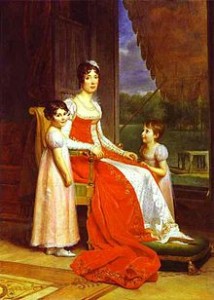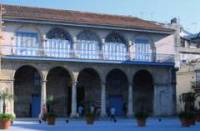GONZALO RUBALCABA, JAZZ PIANIST, COMPOSER.
 Gonzalo Julio Gonzalez Fonseca better known as Gonzalo Rubalcaba was born May 27, 1963 in a post-revolutionary Havana and into a musical family rich in the traditions of the country’s artistic past. He is an important artist and Grammy Award-winning Cuban jazz pianist and composer.
Gonzalo Julio Gonzalez Fonseca better known as Gonzalo Rubalcaba was born May 27, 1963 in a post-revolutionary Havana and into a musical family rich in the traditions of the country’s artistic past. He is an important artist and Grammy Award-winning Cuban jazz pianist and composer.
During his childhood, in addition to the standard fare of elementary schools, Gonzalo absorbed the Cuban musical heritage of his nascent environment through personal contacts within his family, notably his father, pianist Guillermo Rubalcaba and his two brothers (pianist and bassist) as well as from leading musicians who were frequent houseguests: Frank Emilio, Peruchin, Felipe Dulzaides and others.
He also assimilated, through scarce and treasured recordings, the tunes and styles of 40′s – 70′s US jazz masters: Thelonius Monk,Bud Powell, Oscar Peterson among pianists; and instrumentalists Charlie Parker, Dizzy Gillespie and Art Blakey. Gonzalo loved drumming and early in his career studied both piano and drums. Despite the diversity of his background, Gonzalo’s initial formal musical training was entirely classicalGonzalo
He began his training at Manuel Saumell Conservatory at age 9, where he finally chose the piano as his main instrument. He moved up to middle-school at Amadeo Roldan Conservatory and finally earned his degree in music composition from Havana’s Institute of Fine Arts in 1983. By that time he was already playing in clubs and music halls in Havana. He toured France and Africa with Orquesta Aragon in 1980 and introduced his own Grupo Projecto to the North Sea and Berlin Festivals in 1985.
In 2002 he performed as Artist-in-Residence at the Montreal Jazz Festival together with Chucho Valdez. Gonzalo has performed with the likes of Dizzy Gillespie, Ignacio Berroa, Chick Corea, Al DiMeola, Herbie Hancock,Charlie Haden, Katia Labeque, Richard Galliano, Francisco Cespedes, Tony Martinez, Issac Delgado, Juan Luis Guerra, Dave Holland, Chris Potter, Eric Harland, Dennis Chambers, Brian Bromberg, Ron Carter, Yosvany Terry,Matt Brewer, Mike Rodriguez, Marcus Gilmore, Pat Martino, Giovanni Hidalgo,John Patitucci, Jack DeJohnette, Joao Bosco, Eric Harland , Ivan Linz and many others.
His art continues to evolve and draw inspiration from both his Afro-Cuban heritage and the world around us. Our Maestro will continue shaping and reshaping the themes, forms and rhythms which have provided him with inspiration for his life’s work. In whichever idiom he works, his future musical creations will be melodious, rhythmic, exciting and bear in their intriguing intricacies the artist’s inherent intention of transforming the daily routines of our lives into something more beautiful and significant.
Gonzalo now produces and records for his own record label and production company, 5Passion LLC, founded in 2010.
The first offering is entitled ‘Fé” (Faith), a solo piano offering that is an exquisite foray into the depths of color and emotion that reward the listener with every spin. In 2011, Gonzalo released “XXI Centrury” , a double CD featuring music from various periods and genres, and features the likes of Ignacio Berroa, Matt Brewer, Marcus Gilmore, Lionel Leouke , Pedro Martinez and Gonzalo Rubalcaba.
Gonzalo is currently working on his next offering, to be released in 2015. In addition, his 5Passion label plans to release several discs from Yosvany Terry, Ignacio Berroa, Jose Armando Gola and Alex Sipiagin, all of whom are considered some of the best musicians on the planet.
Agencies/Various/InternetPhotos/YouTube/TheCubanHistory.com
The Cuban History, Hollywood.
Arnoldo Varona, Editor.
GONZALO CUBALCABA, PIANITA DE JAZZ, COMPOSITOR..
Gonzalo Julio González Fonseca mejor conocido como Gonzalo Rubalcaba nació 27 de mayo 1963 en La Habana post-revolucionaria y en una familia musical rica en las tradiciones del pasado artístico del país. Él es un artista importante y ganador del premio Grammy el pianista de jazz y compositor cubano.
Durante su infancia, además de la tarifa estándar de las escuelas primarias, Gonzalo absorbe el patrimonio musical cubano de su entorno naciente a través de contactos personales dentro de su familia, especialmente a su padre, el pianista Guillermo Rubalcaba y sus dos hermanos (pianista y bajista), así como de los principales músicos que estaban tener invitados frecuentes: Frank Emilio, Peruchín, Felipe Dulzaides y otros.
También asimila, a través de los escasos y preciados grabaciones, las melodías y estilos de 40 de – de 70 estadounidenses maestros del jazz: Thelonius Monk, Bud Powell, Oscar Peterson entre los pianistas; e instrumentistas Charlie Parker, Dizzy Gillespie y Art Blakey. Gonzalo amaba tambores y al principio de su carrera estudió piano y tambores. A pesar de la diversidad de sus antecedentes, formación musical inicial de Gonzalo era totalmente classicalGonzalo
Comenzó su formación en el Conservatorio Manuel Saumell a los 9 años, donde finalmente eligió el piano como su instrumento principal. Se trasladó hasta la escuela secundaria en el Conservatorio Amadeo Roldán y finalmente obtuvo su licenciatura en composición musical en el Instituto de Bellas Artes de La Habana en 1983. En ese momento él ya estaba tocando en clubes y salas de música en La Habana. Realiza una gira por Francia y África, con la Orquesta Aragón en 1980 y presentó su propio Grupo Projecto de los Festivales del Mar del Norte y de Berlín en 1985.
En 2002 se desempeñó como artista en residencia en el Festival de Jazz de Montreal, junto con Chucho Valdez. Gonzalo ha actuado con artistas como Dizzy Gillespie, Ignacio Berroa, Chick Corea, Al DiMeola, Herbie Hancock, Charlie Haden, Katia Labeque, Richard Galliano, Francisco Céspedes, Tony Martinez, Issac Delgado, Juan Luis Guerra, Dave Holland, Chris Potter, Eric Harland, Dennis Chambers, Brian Bromberg, Ron Carter, Yosvany Terry, Matt Brewer, Mike Rodríguez, Marcus Gilmore, Pat Martino, Giovanni Hidalgo, John Patitucci, Jack DeJohnette, Joao Bosco, Eric Harland, Ivan Linz y muchos otros.
Su arte sigue evolucionando y inspirarse en tanto su herencia afro-cubana y el mundo que nos rodea. Nuestro Maestro continuará formar y reformar los temas, formas y ritmos que le han brindado inspiración para la obra de su vida. En cualquier idioma que trabaja, sus futuras creaciones musicales serán melodiosa y rítmica, excitante y tener en sus complejidades inherentes intrigantes intención del artista de transformar las rutinas diarias de nuestra vida en algo más hermoso y significativo.
Gonzalo ahora produce y registros para su propio sello discográfico y la producción de la empresa, 5Passion LLC, fundada en 2010.
La primera oferta se titula “Fé” (Fe), una oferta de piano que es un exquisito incursión en las profundidades de color y emoción que premian al oyente con cada giro. En 2011, Gonzalo lanzó “XXI centrury”, un doble CD con música de diferentes épocas y géneros, y cuenta con la talla de Ignacio Berroa, Matt Brewer, Marcus Gilmore, Lionel Leouke, Pedro Martínez y Gonzalo Rubalcaba.
Gonzalo se encuentra trabajando en su próxima oferta, que se estrenará en 2015. Además, su sello 5Passion planea lanzar varios discos de Yosvany Terry, Ignacio Berroa, José Armando Gola y Alex Sipiaguin, todos los cuales se consideran algunos de los mejores músicos en el planeta.
Agencias / Varios / InternetPhotos / YouTube / TheCubanHistory.com
La Historia de Cuba, de Hollywood.
Arnoldo Varona, Editor.














